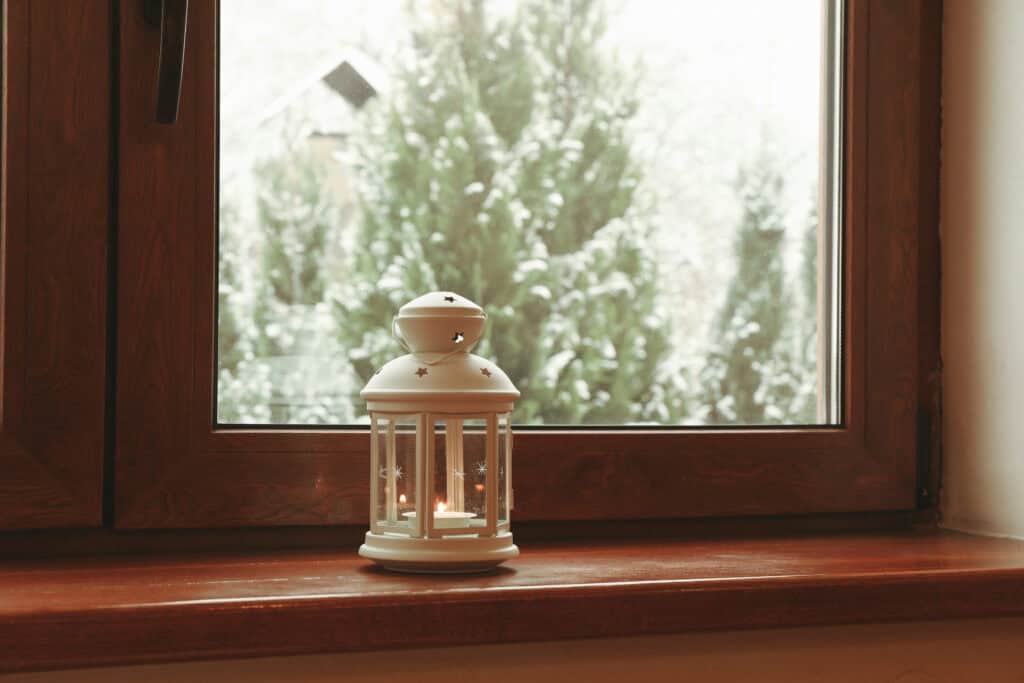Winter brings cozy nights, festive gatherings, and harsh conditions that can take a toll on your wood furniture. Dry indoor air, fluctuating temperatures, and increased moisture exposure can cause wood to crack, warp, or dull over time. Luckily, with a little care, you can keep your solid wood furniture looking beautiful all winter long. This guide explores the best ways to winter care for wood furniture.
How Winter Affects Wood Furniture
Wood is a natural material that reacts to environmental changes. As temperatures drop and heaters run constantly, the air inside your home becomes much drier. This lack of moisture can lead to:
- Cracks and Splitting – Wood loses moisture in dry conditions, causing it to shrink and develop small cracks.
- Loose Joints – As wood shrinks, furniture joints may loosen, leading to wobbly chairs or unstable tables.
- Fading and Dulling – Dry air can strip the wood’s natural sheen, making it look dull and worn.
Understanding these effects is the first step in keeping your wood furniture in top shape. Now, let’s dive into how to protect it.
1. Control Indoor Humidity
One of the biggest threats to wood furniture in winter is dry air. Keeping humidity levels between 40% and 50% can help prevent cracks, warping, and loose joints. A humidifier can be a great way to add moisture to the air, benefiting your furniture and your health. Monitoring humidity levels with a small hygrometer ensures that moisture stays within an ideal range. Additionally, grouping houseplants can naturally release moisture into the air, helping to maintain the necessary humidity levels and protect wood furniture from drying out.
2. Keep Furniture Away from Heat Sources
We all love a warm home in winter, but placing wood furniture too close to fireplaces, radiators, heating vents, or space heaters can dry it out too quickly. To prevent this, keep wood tables, chairs, and cabinets at least 3-5 feet away from heat sources. If your furniture is near a window, direct sunlight can further dry it out, so using curtains or blinds during peak daylight hours can help protect it from unnecessary exposure. Cold temperatures can also affect the integrity of solid wood furniture, making proper placement within your home even more essential.
3. Dust and Clean Regularly
Dry winter air can cause dust buildup, which may scratch and dull the surface of your wood furniture. Regular cleaning is essential for maintaining its beauty and longevity. Dusting weekly with a soft microfiber cloth prevents scratches, while using a slightly damp cloth helps pick up dust more effectively. However, excess moisture should be avoided as it can damage the wood’s finish. Choosing the right cleaners is also important—gentle wood cleaners or a mild soap-and-water mix work best. In contrast, harsh chemicals and ammonia-based cleaners should be avoided to preserve the wood’s protective coating. For extra protection, consider applying a water repellant to create a barrier against accidental spills and condensation.
4. Moisturize with Furniture Polish or Oil
Just like your skin needs extra hydration in winter, so does your wood furniture. Conditioning your furniture helps prevent cracks and maintains its natural luster. Natural oils such as lemon, linseed, or beeswax-based polishes can nourish the wood. However, it’s best to apply these oils sparingly—too much can leave a greasy residue, and a light application every 4-6 weeks is enough. Avoid silicone-based polishes, as they create a buildup that attracts dust and dulls the finish over time. High-quality furniture polish can provide additional protection and enhance the beauty of your solid wood furniture.
5. Be Mindful of Spills and Condensation
Winter means more hot drinks and holiday gatherings, both of which can lead to accidental spills and water rings. To prevent rings and heat damage, always use coasters under mugs and placemats under hot dishes. Since wood absorbs liquid quickly, wiping up spills immediately is essential to prevent stains or warping. A little extra vigilance goes a long way in keeping your furniture looking its best. Using furniture covers when entertaining can add an extra layer of protection against spills and accidental damage.
6. Tighten Loose Joints
Because wood naturally expands and contracts with temperature changes, joints in tables, chairs, and cabinets may loosen over time. Regularly check for wobbly legs or loose screws and tighten them as needed. If you notice movement, applying a small amount of wood glue can help keep joints sturdy. Scheduling seasonal maintenance at the start of winter ensures your furniture stays strong and durable throughout the season.
Caring for Outdoor Wood Furniture in Winter
Outdoor wood furniture, such as patio tables, Adirondack chairs, and wooden benches, requires special attention during winter to prevent damage from extreme weather conditions. Winter weather—especially snow, ice, and freezing temperatures—can be rough on outdoor wood. Here’s how to protect it:
- Store Indoors If Possible – If you have room in a garage, shed, or basement, move wooden patio furniture inside for the season.
- Use Protective Covers – Waterproof covers shield wood furniture from snow, ice, and moisture buildup.
- Apply a Protective Sealant – A weatherproof wood sealant helps protect against moisture damage.
- Keep It Elevated – If you can’t move furniture indoors, raise it slightly off the ground with bricks or wooden blocks to prevent water damage.
Keep Your Wood Furniture Beautiful All Winter
Caring for wood furniture during winter is a simple yet essential task to maintain its integrity and beauty. By taking preventative measures such as controlling indoor humidity, using proper cleaning techniques, and protecting furniture from extreme conditions, you can extend its lifespan and keep it looking its best. With just a little effort and attention to detail, your wood furniture will continue to add warmth and charm to your home throughout the colder months and beyond.
We Can Help!
Weaver Furniture Sales in Shipshewana, Indiana, leads the way in supplying Amish-crafted, custom-made, solid hardwood furniture to customers across the United States. The top Amish artisans in the Midwest painstakingly handcraft each piece of furniture from Weaver. And the Amish builders use quality hardwoods like cherry, maple, and oak. So, it’s little wonder the pieces are beautiful, sturdy, and long-lasting. In fact, with proper care, the furniture you buy from Weaver should last for generations to come.






